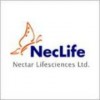
i
Flamingo
Pharmaceuticals
Filter interviews by
Flamingo Pharmaceuticals Interview Questions and Answers
15 Interview questions
Data metadata refers to information that describes the characteristics and context of data, enhancing its usability and management.
Definition: Metadata is often described as 'data about data', providing context and meaning to the actual data.
Types of Metadata: There are three main types: descriptive (e.g., title, author), structural (e.g., how data is organized), and administrative (e.g., creation date, access rig...
AWC (Available Water Capacity) is a measure of soil's ability to retain water for plant use, crucial for irrigation management.
Definition: AWC refers to the amount of water that soil can hold and make available to plants, influencing irrigation practices.
Importance in Agriculture: Understanding AWC helps farmers determine irrigation needs, ensuring crops receive adequate moisture.
Calculation: AWC is calculated by ...
The process from warehouse to dispatch involves inventory management, order processing, packaging, and shipping logistics.
Inventory Management: Keeping track of stock levels and ensuring that items are available for order fulfillment.
Order Processing: Receiving and verifying customer orders, often through an order management system.
Picking: Selecting the correct items from the warehouse based on the order details,...
Cleaning validation is the process of ensuring that cleaning procedures effectively remove residues from equipment used in manufacturing processes.
Cleaning validation is essential in industries such as pharmaceuticals, food and beverage, and medical devices to prevent cross-contamination and ensure product quality.
It involves establishing documented evidence that cleaning procedures consistently and effectively re...
USP chapter name and number for chromatography is USP <1052>.
USP chapter <1052> covers chromatography
It provides guidelines for method validation and system suitability testing in chromatography
Examples of chromatographic techniques include HPLC, GC, and TLC
HPLC troubleshooting involves identifying and resolving issues in High-Performance Liquid Chromatography systems.
Check for leaks in the system; use a paper towel to detect solvent spots.
Ensure the mobile phase is prepared correctly; incorrect pH can affect retention times.
Inspect the column for blockages; a pressure increase may indicate a clogged column.
Verify the pump's flow rate; fluctuations can lead to incons...
AWC ka challenge test pressure aur temperature ke parameters ko assess karne ka ek tarika hai.
AWC (Air-Water-Cooling) system ki efficiency ko test karne ke liye pressure aur temperature readings liye jaate hain.
Test ke dauraan, system ko specific load conditions par operate kiya jata hai.
Data ko record karne ke liye sensors aur gauges ka istemal hota hai, jaise manometer aur thermocouples.
Test ke baad, results ko ...
Out of specification (OOS) refers to a result that falls outside the predetermined acceptance criteria or specifications.
OOS occurs when a test result does not meet the predefined criteria for quality or safety.
It indicates a deviation from the expected or desired outcome.
OOS can occur in various industries, including pharmaceuticals, manufacturing, and food production.
Examples of OOS include a drug potency level ...
AWC challenge test is a type of problem that can occur in compression machines.
AWC challenge test is a test to check the accuracy of the compression machine.
It involves compressing a known weight of material and measuring the force applied.
If the force applied is not within the acceptable range, it indicates a problem with the machine.
Possible causes of the problem include worn out parts, incorrect calibration, or...
Formulation and development involves the process of creating and optimizing formulations for various products.
Formulation and development is the process of designing and optimizing the composition of a product, such as pharmaceuticals, cosmetics, or food.
It involves selecting and combining ingredients to achieve desired properties and performance.
Formulation scientists conduct experiments and tests to determine th...
Flamingo Pharmaceuticals Interview Experiences
31 interviews found
I applied via Campus Placement
(2 Questions)
- Q1. I am work in aarti drugs boisar
- Q2. I am 3 year experience
Yes I am interested bling from up qualifications iti fitter
Interview Preparation Tips
I applied via Indeed and was interviewed in Jul 2024. There was 1 interview round.
(2 Questions)
- Q1. Brief us about your Profile
- Ans.
I am an experienced HR professional with expertise in recruitment, employee relations, and performance management.
Over 8 years of experience in HR roles
Skilled in conducting interviews and onboarding new employees
Successfully implemented performance appraisal systems
Handled employee relations issues effectively
- Q2. What value can you add to our organization
- Ans.
I can bring a diverse skill set, strong work ethic, and a passion for continuous improvement to drive success in your organization.
Extensive experience in HR management and talent acquisition
Proven track record of implementing successful employee development programs
Strong communication and interpersonal skills to foster positive relationships with employees and management
Ability to adapt to changing environments and d...
- Q1. Validations & verification difference, validations & verification Parameters, vendor qualification.
- Q2. Cleaning method development parameters & Recovery limits.
- Ans.
Cleaning method development involves parameters ensuring effective residue removal and defined recovery limits for validation.
Identify cleaning agents based on residue type (e.g., solvents for organic residues).
Establish parameters like contact time, temperature, and concentration.
Conduct recovery studies to determine the efficiency of cleaning methods.
Set recovery limits (e.g., <10% residue) to ensure compliance wi...
- Q3. Instrument troubleshooting.
I appeared for an interview in Nov 2024, where I was asked the following questions.
- Q1. What is All process from Wearhouse to dispatch
- Ans.
The process from warehouse to dispatch involves inventory management, order processing, packaging, and shipping logistics.
Inventory Management: Keeping track of stock levels and ensuring that items are available for order fulfillment.
Order Processing: Receiving and verifying customer orders, often through an order management system.
Picking: Selecting the correct items from the warehouse based on the order details, whic...
- Q2. What is data metadata
- Ans.
Data metadata refers to information that describes the characteristics and context of data, enhancing its usability and management.
Definition: Metadata is often described as 'data about data', providing context and meaning to the actual data.
Types of Metadata: There are three main types: descriptive (e.g., title, author), structural (e.g., how data is organized), and administrative (e.g., creation date, access rights).
...
- Q3. Compression machine load sell and location
- Q4. What is awc and work
- Ans.
AWC (Available Water Capacity) is a measure of soil's ability to retain water for plant use, crucial for irrigation management.
Definition: AWC refers to the amount of water that soil can hold and make available to plants, influencing irrigation practices.
Importance in Agriculture: Understanding AWC helps farmers determine irrigation needs, ensuring crops receive adequate moisture.
Calculation: AWC is calculated by subtr...
- Q5. In process test
- Ans.
In-process testing ensures quality control during production, identifying defects before final product completion.
In-process testing involves checking products at various stages of production.
Example: Inspecting a circuit board after soldering components to ensure connections are secure.
It helps in early detection of defects, reducing waste and rework.
Example: Testing a drug formulation during manufacturing to ensure p...
- Q6. Punch and dies inspection
Interview Preparation Tips
(2 Questions)
- Q1. HPLC troubles shooting
- Ans.
HPLC troubleshooting involves identifying and resolving issues in High-Performance Liquid Chromatography systems.
Check for leaks in the system; use a paper towel to detect solvent spots.
Ensure the mobile phase is prepared correctly; incorrect pH can affect retention times.
Inspect the column for blockages; a pressure increase may indicate a clogged column.
Verify the pump's flow rate; fluctuations can lead to inconsisten...
- Q2. USP chapter name and number for chromatography
- Ans.
USP chapter name and number for chromatography is USP <1052>.
USP chapter <1052> covers chromatography
It provides guidelines for method validation and system suitability testing in chromatography
Examples of chromatographic techniques include HPLC, GC, and TLC
I applied via Company Website and was interviewed in Sep 2023. There were 3 interview rounds.
(1 Question)
- Q1. Family & salary related
(1 Question)
- Q1. Equipment maintenance related question
(1 Question)
- Q1. Salary related question and family background
Interview Preparation Tips
I appeared for an interview before Mar 2024, where I was asked the following questions.
- Q1. How to develop an analytical method for related substance
- Q2. How to develop analytical method for Dissolution
Interview Preparation Tips
I applied via Approached by Company and was interviewed in Mar 2023. There were 3 interview rounds.

(2 Questions)
- Q1. Techanical question
- Q2. And iam answring
(2 Questions)
- Q1. Awc ka challange test kaise karte hain
- Ans.
AWC ka challenge test pressure aur temperature ke parameters ko assess karne ka ek tarika hai.
AWC (Air-Water-Cooling) system ki efficiency ko test karne ke liye pressure aur temperature readings liye jaate hain.
Test ke dauraan, system ko specific load conditions par operate kiya jata hai.
Data ko record karne ke liye sensors aur gauges ka istemal hota hai, jaise manometer aur thermocouples.
Test ke baad, results ko analy...
- Q2. And iam answring

(2 Questions)
- Q1. What is your job profile?
- Q2. What is Out of specification (OOS)?
- Ans.
Out of specification (OOS) refers to a result that falls outside the predetermined acceptance criteria or specifications.
OOS occurs when a test result does not meet the predefined criteria for quality or safety.
It indicates a deviation from the expected or desired outcome.
OOS can occur in various industries, including pharmaceuticals, manufacturing, and food production.
Examples of OOS include a drug potency level excee...
Interview Preparation Tips
I applied via Naukri.com and was interviewed in Jan 2023. There were 2 interview rounds.

(2 Questions)
- Q1. Types of machine type of toolings compression machine
- Ans.
Compression machines can be classified into hydraulic, mechanical, and pneumatic types with various toolings for different applications.
Hydraulic compression machines use hydraulic pressure to compress materials, such as rubber and plastics.
Mechanical compression machines use mechanical force to compress materials, such as metals and ceramics.
Pneumatic compression machines use compressed air to compress materials, such...
- Q2. Awc challenge test type of problem in compression machine
- Ans.
AWC challenge test is a type of problem that can occur in compression machines.
AWC challenge test is a test to check the accuracy of the compression machine.
It involves compressing a known weight of material and measuring the force applied.
If the force applied is not within the acceptable range, it indicates a problem with the machine.
Possible causes of the problem include worn out parts, incorrect calibration, or impr...
Interview Preparation Tips
Top trending discussions






Flamingo Pharmaceuticals Interview FAQs
The duration of Flamingo Pharmaceuticals interview process can vary, but typically it takes about less than 2 weeks to complete.
Tell us how to improve this page.
Flamingo Pharmaceuticals Interviews By Designations
- Flamingo Pharmaceuticals Senior Officer Interview Questions
- Flamingo Pharmaceuticals Executive Interview Questions
- Flamingo Pharmaceuticals Quality Control Officer and Microbiologist Interview Questions
- Flamingo Pharmaceuticals HR Executive Interview Questions
- Flamingo Pharmaceuticals Production Interview Questions
- Flamingo Pharmaceuticals Production Manager Interview Questions
- Flamingo Pharmaceuticals Assistant Manager Interview Questions
- Flamingo Pharmaceuticals Associate Engineer Interview Questions
- Show more
Interview Questions for Popular Designations
Overall Interview Experience Rating
based on 23 interview experiences
Difficulty level
Duration
Interview Questions from Similar Companies
Flamingo Pharmaceuticals Reviews and Ratings
based on 418 reviews
Rating in categories
|
Officer
144
salaries
| ₹1.4 L/yr - ₹4.9 L/yr |
|
QA Officer
46
salaries
| ₹1.5 L/yr - ₹3.2 L/yr |
|
Production Officer
44
salaries
| ₹1.4 L/yr - ₹3 L/yr |
|
Quality Assurance Officer
40
salaries
| ₹1.2 L/yr - ₹3.5 L/yr |
|
Senior Officer
39
salaries
| ₹3 L/yr - ₹6.2 L/yr |

Abbott

Granules India Limited

Sanofi

Unichem Laboratories
- Home >
- Interviews >
- Flamingo Pharmaceuticals Interview Questions












